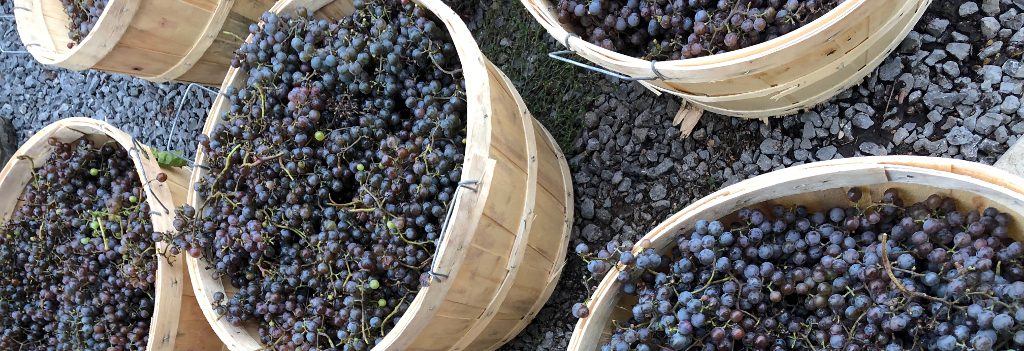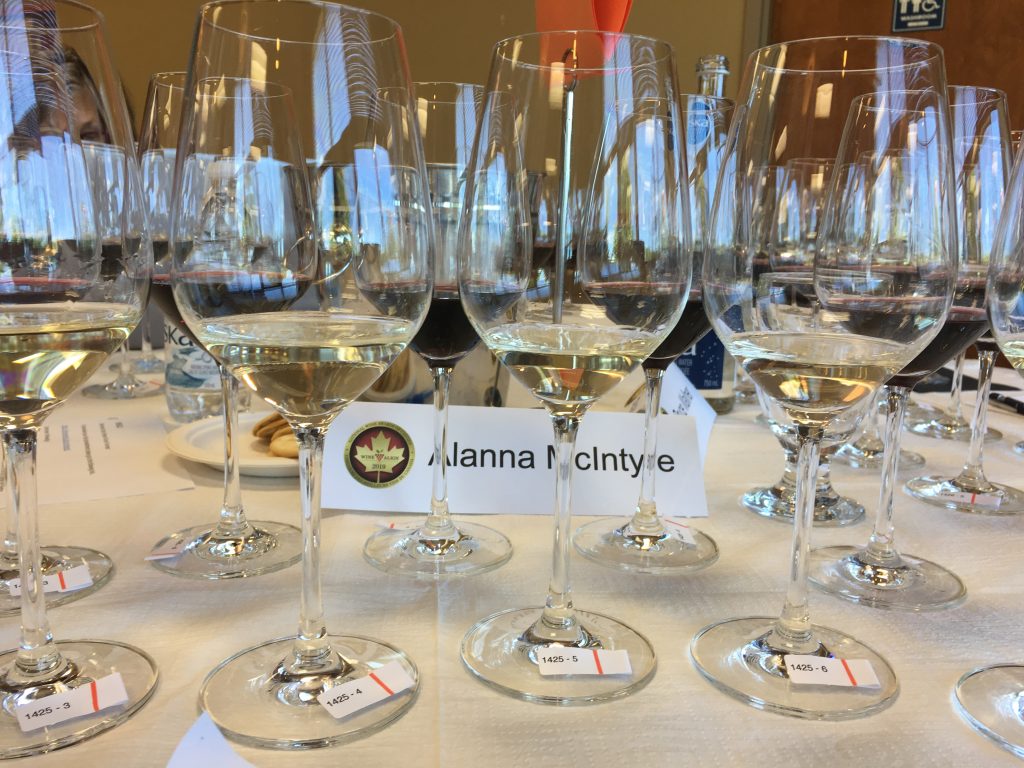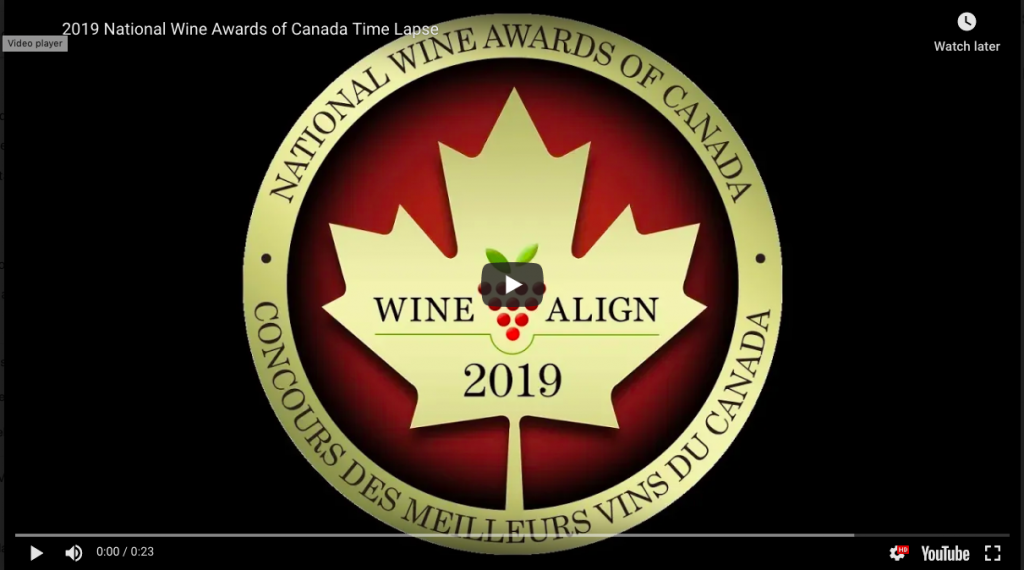This past June, twenty two wine professionals gathered in Prince Edward County, Ontario to taste, evaluate and score over 1800 wines from across the country for the WineAlign National Wine Awards of Canada. The goal of this competition is to recognize and award scores to the best wines being made in Canada- or at least those wines that have been submitted into the competition. The scores translate into medals and these results are communicated via WineAlign’s online publication.
Some people have asked me if wine competitions are credible, wondering if the point scores and awards are truly important to the wineries. In the end, it all comes down to the judge’s skills and how the competitions are organized. For the NWAC, the judging team is made up of an eclectic group of Master Sommeliers, Master of Wines and MW candidates, restaurateurs, wine writers, educators, wine retailers, winemakers and consultants. The combined experience of the judges is superlative. Many trained palates ensure a broader perspective is represented at the tasting table.
How the WineAlign National Wine Awards of Canada Judging Works
Day one of five begins with Canadian wine guru Anthony Gismondi reminding us that the competition is not about the judges, it’s not about how we taste, nor our wine preferences. Our job is to judge; to assess quality and identify the stand out wines.
The judges are grouped into panels of three to four. We sit around large circular tables with our flights of wine lined up in front of us, along with spittoons, water and scoresheets. We taste about 12 flights a day; a flight is a line up of wine that usually consists of 8-9 wines and we try to limit ourselves to 25-30 minutes to evaluate each flight. The only information the judges receive about the wine is the grape varietal, the blend or wine style. No information about regionality, vintage or price point is revealed.
Tasting blind is really humbling, it forces you to truly pay attention and not be influenced by producer or price- though at the end of the competition we get a binder with the list of wines we tasted and our scores. The judges taste, make notes and assess the wines individually and then discuss their scores as a panel to make sure that the results are cohesive. The head judge at each table may call into question a colleague’s score or ask another judge to explain their decision. It’s helpful to note that we all taste the wines in a different order; some taste left to right, right to left or alternating. We recognize that the tasting sequence can affect one’s palate and a judge could have perceived certain elements in a wine more than another due to the order in which a wine was tasted. In some cases, after the panel’s discussion, a score can be changed to bring the final results more in line with each other. Having an open mind and remembering the competition is about the wines is key for the panel to work well together to ultimately find the great wines out of the bunch. Each judge submits an individual score, but these are discussed openly and agreed upon as a group.
Scores
WineAlign’s scoring system follows a 100 point scale-wines that score 86 or less, receive no medal. Scores of 87-88 receive Bronze, 89-90 Silver, and 91+ are awarded Gold. The highest scoring wines (silvers and golds) come back for “the finals” and are re-visited on days four and five. During the finals, sometimes two panels of judges are tasting the same wines, which means that the best wines are being tasted by more palates and the best wines should receive the recognition they deserve. Alternatively, wines that might have been awarded a high score earlier in the competition can sometimes get knocked out when re-tasted. This process is in place to uphold the credibility of the competition with the goal of identifying and awarding the best wines.
The idea of tasting 90 wines a day is both exciting or terrifying. The judges need to stay focused and clear-headed. That said, after many hours of swishing and spitting, one inevitably notices some of the effects of alcohol on their body and mind. By the end of the day, I usually don’t feel my most sparkly self. It takes a lot of concentration and stamina to stay present and to give each wine the attention it deserves.
In addition to competent judges, the competition relies heavily on a dedicated team from WineAlign and many local volunteers who work in the back room, pouring the samples, dropping wines at tables at the proper temperature, and clearing glasses for hours a day for 5 days in a row.
Time lapse video from Wine Align: 6 hours, 6000 wines tasted
This was my third year judging for Wine Align’s National Wine Awards of Canada; my first time was at home in Nova Scotia as an apprentice judge. Participating in these awards has been an incredible learning experience; I have had the chance to meet many wonderful people who work in the world of wine, to taste wines I wouldn’t otherwise have access to and gain a deeper understanding of the wine culture of the region hosting the awards.
Wine scores and awards are beneficial for producers as they can bring recognition to a region and influence sales. Consumers can also utilize the scores and tasting notes to help them make informed wine buying decisions. Wine competitions may also be an incentive for improving winemaking standards considering that there are many skilled and experienced tasters evaluating and judging the wines. Maybe wine scores be seen as a message to winemakers to continue to produce certain wines/styles and stop producing others. As wine consumers, we want to drink good wine and if wine competitions and awards help guide producers in the right direction where the goal is to produce wines that are authentic, speak of a place and are focused on quality, I raise a glass to that! Scores and reviews can be helpful guides when selecting a wine for personal consumption, but ultimately, only you know what you like to drink and we all have our unique preferences. Trust your palate and enjoy the discoveries along the way.
A snapshot of Canadian Wine
Canada has four major wine growing regions, from largest to smallest: British Columbia (280 wineries, 4249 Hectares), Ontario (175 wineries, 6900 Hectares), Quebec (100 wineries, 417 hectares) and Nova Scotia (22 wineries, 404 Hectares). The British Columbia and Ontario wine industries are largely based on Vitis Vinifera with majority plantings of Pinot Gris, Chardonnay and Riesling for white wines, plus Merlot, Pinot Noir and Cabernet Franc for reds. Quebec and Nova Scotia are still heavily based on French American Hybrid grapes like Vidal, Frontenac, Seyval, L’Acadie Blanc, Muscat, Marechal Foch, Leon Millot with Vinifera varieties slowly increasing.
Though not in the majority of grapes planted, I remain impressed with Syrah from BC and Ontario Gamay for reds. Just like in Burgundy, Chardonnays and Pinot Noir will capture our attention and also break our hearts. I see stellar Riesling being made across the country and continue to be impressed with L’Acadie Blanc as a Traditional Method sparkling wine at home in Nova Scotia.



